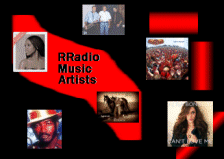 Analytics, Metrics and Music for the Radio Industry
Analytics, Metrics and Music for the Radio Industry
 An Indie Artist Pipeline to Internet Radio
An Indie Artist Pipeline to Internet Radio
 Radio Industry ROI Strategy
Radio Industry ROI Strategy
 A New Breed of Indie Artists
A New Breed of Indie Artists
Streaming, Only One Part of Online
A healthy discussion on the quality of radio industry streams was started the other day by Radio Ink's Editor, Ed Ryan.
As the banter goes back-and-forth, it's evident that there's a lack of knowledge within the radio industry about the complexity of streaming, or how far software development has come in solving problems associated with joining a program after commercials air.
In reading comments following this Radio Ink article, "Ad Insertion Technology Disappoints Broadcasters," another opinion one may grow is that there's a huge amount of hubris in radio. You choose how to lean. I've made my decision.
At the least, the conversation is moving this topic along more than what we've seen. Just know that these words are only the tip of the online iceberg. The radio industry still needs to dig deeper before seeing payoff - in part, because it waited so long before jumping in.
| "Radio industry executives are not only not thinking different, in many cases they are not thinking at all." |
Being online has many different aspects that those in radio still ignore. We've discussed each of the following points multiple times, but they require mentioning again. Improvements in web sites, analytics & metrics coding, social media flexibility, email marketing, database management, ad inventory control, and content updates are separate segments which all need attention (after this discussion of "what your stream sounds like" is settled). |
|
I don't want to scare anyone away, but (as you've been warned at Audio Graphics since 1997) this "being online" is not a walk in the park. It requires effort to understand the landscape, to retrieve knowledge about navigating the many online disciplines, to test theories, and then implement concepts. The internet is not plug and play. It's easy to overwhelm anyone with all that can be gained by properly using the internet as an adjunct to the radio industry. For radio execs who continue to claim there's no money to be made online, rest assured that they are classic examples of former Defense Secretary Donald Rumsfeld's observation: "We don't know what we don't know." There are plenty of examples of profitable companies that have found their niche while the radio industry trips over the idea "we'll just put up a web site and voila." One area to briefly cover today is what a radio station should stream. Here's one example of what not to do, offered by "Keith" in a comment to the Radio Ink article:
I disagree with Keith in what the masses are looking for online; it is not an "exact" terrestrial signal. Few persons listening online will put up with commercial breaks stretching the length of what's placed on-air. He also has no chance of standing out online by re-purposing his station's broadcast signal. One reason, online there are a hundred-fold more competitors for his radio station. "Think different!" Do you remember this? It's the slug line for Apple Computer created by TBWA\Chiat\Day, and it sums up what radio is doing wrong. Radio industry executives are not only not thinking different, in many cases they are not thinking at all. "Think different" is putting online that which cannot be found elsewhere. It forms the purpose of "why" a person would pursue you as an online destination. Most important, it gives a person reason to tell their friends why they too should visit your site. There is no "different" within radio online if it's become a replication of its over-the-air self. We've all heard the main complaint: Radio programming has become homogenized. And we've all heard the defense: Radio creates "compelling" content. Again, judge for yourself. I know which one I hear. Starting with your stream, because it's the easiest item to change, think different. A radio station should be placing audio elements that it can promote - over-the-air - which give reason why a person should visit your station online. Follow Keith's suggestion of placing "EXACTLY what I hear on the terrestrial signal..." and you've given the audience nothing to pursue. For talk stations, thinking different means creating a series of program vignettes. Try searching the internet for the many podcasts of sufficient quality to offer. For music stations, your audience is looking for "new" music. For this, Audio Graphics has created a few answers. To fill your stream and give audiences something "new," turn to the free AG services. They are based on our collection of new indie artists looking for exposure. All have signed waivers giving you free use of their music, and all meet my standards for quality.
For other companies within the radio industry, the ones waking up to the fact that they need a more robust online presence, your search to improve must start with the stream; and Audio Graphics is set to help you achieve that goal without spending money, and by doing very little work. As pointed to above, "...there's a lack of knowledge about the complexity of streaming..." in the radio industry. The time has come to make a move to improve, to "think different." Audio Graphics will help with free options for your stream. Radio as we've known it is dead. Long live radio! |













